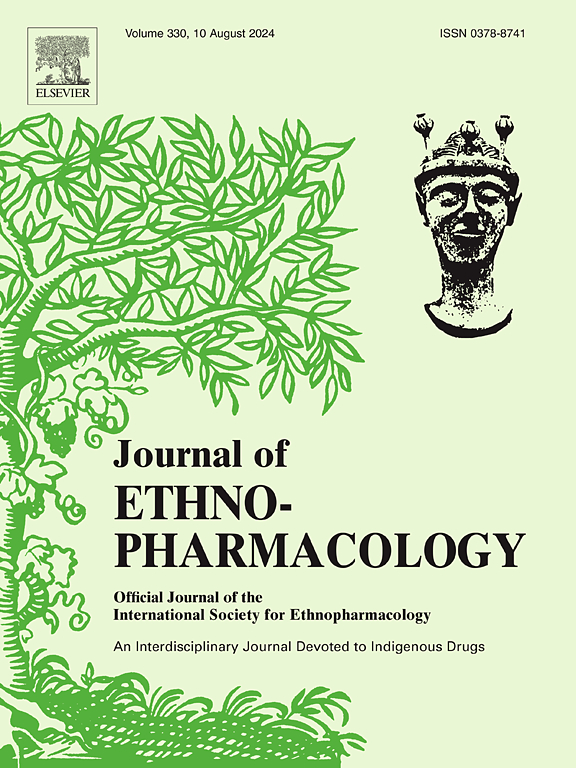Prevalence and use patterns of kava (Piper methysticum) in a US nationally representative sample
IF 5.4
2区 医学
Q1 CHEMISTRY, MEDICINAL
引用次数: 0
Abstract
Ethnopharmacological relevance
Piper methysticum G. Forst., commonly known as kava, has a long ethnopharmacological history among Pacific Islanders. In recent years, its use in the US has grown as we understand more about its active constituents, kavalactones, which have demonstrated anxiolytic effects in clinical trials. Extracts of this plant have been marketed in many dosage forms including beverages and tea bags.
Aim of the study
Identify the conceptualization and patterns of use for kava products in the US and past-year prevalence via a survey study.
Materials and methods
Non-probabilistic sampling through a third-party marketing company was conducted, inviting persons who previously opted to participate in surveys. Participants reported use patterns including frequency, quantity, length of time used, and co-use with other products across several indications, along with product types, perceived effects, and Kava product purchasing patterns.
Results
The final sample included 2000 respondents, half identified as kava users. Past-year prevalence of kava use was 10.7 %. Over 50 % of kava users indicated co-use with alternative products. Prescription medicines were co-used for the largest number of indications. The largest proportion of users purchased kava in kava bars (33.7 %) and consumed it at home (59.4 %). The most reported perceived effects were happy, relaxed, and friendly. Kava was most commonly (88.1 %) rated as effective for relaxation and stress relief, while drowsiness (15.4 %) and sweating (15.0 %) were the most frequently reported unwanted effects.
Conclusions
Survey results provide additional insights into kava use patterns in the general population and conceptualization of kava in the context of health and well-being.

卡瓦胡椒(Piper methysticum)在美国全国代表性样本中的流行和使用模式。
民族药理学相关性:Piper methysticum G. Forst。俗称卡瓦,在太平洋岛民中有着悠久的民族药理学历史。近年来,随着我们对其活性成分卡瓦内酯的了解越来越多,它在美国的使用也越来越多,卡瓦内酯在临床试验中显示出抗焦虑作用。这种植物的提取物已经以多种剂型上市,包括饮料和茶包。研究目的:通过一项调查研究,确定美国卡瓦产品的概念和使用模式,以及过去一年的流行情况。材料和方法:通过第三方营销公司进行非概率抽样,邀请之前选择参与调查的人员。参与者报告了使用模式,包括频率,数量,使用时间长短,以及与其他产品在几种适应症中的共同使用,以及产品类型,感知效果和Kava产品购买模式。结果:最终样本包括2000名受访者,其中一半被确定为卡瓦用户。过去一年卡瓦的使用率为10.7%。超过50%的卡瓦用户表示与其他产品共同使用。处方药合用的适应症最多。最大比例的用户在卡瓦酒吧购买卡瓦(33.7%),在家消费(59.4%)。报告中最多的感知效果是快乐、放松和友好。卡瓦最常见(88.1%)被评为放松和缓解压力的有效药物,而嗜睡(15.4%)和出汗(15.0%)是最常见的不良反应。结论:调查结果对一般人群中的卡瓦使用模式和健康和福祉背景下卡瓦的概念化提供了更多的见解。
本文章由计算机程序翻译,如有差异,请以英文原文为准。
求助全文
约1分钟内获得全文
求助全文
来源期刊

Journal of ethnopharmacology
医学-全科医学与补充医学
CiteScore
10.30
自引率
5.60%
发文量
967
审稿时长
77 days
期刊介绍:
The Journal of Ethnopharmacology is dedicated to the exchange of information and understandings about people''s use of plants, fungi, animals, microorganisms and minerals and their biological and pharmacological effects based on the principles established through international conventions. Early people confronted with illness and disease, discovered a wealth of useful therapeutic agents in the plant and animal kingdoms. The empirical knowledge of these medicinal substances and their toxic potential was passed on by oral tradition and sometimes recorded in herbals and other texts on materia medica. Many valuable drugs of today (e.g., atropine, ephedrine, tubocurarine, digoxin, reserpine) came into use through the study of indigenous remedies. Chemists continue to use plant-derived drugs (e.g., morphine, taxol, physostigmine, quinidine, emetine) as prototypes in their attempts to develop more effective and less toxic medicinals.
 求助内容:
求助内容: 应助结果提醒方式:
应助结果提醒方式:


